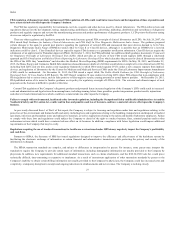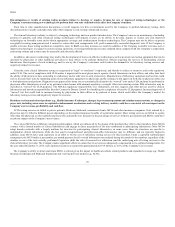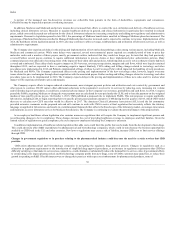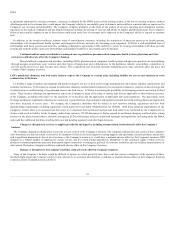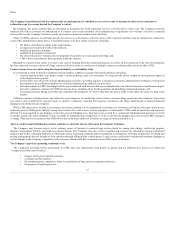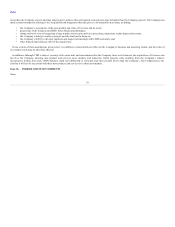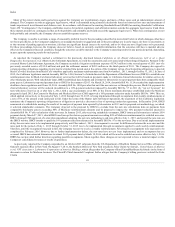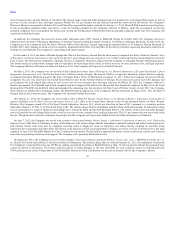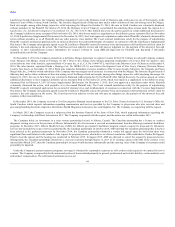LabCorp 2015 Annual Report Download - page 35
Download and view the complete annual report
Please find page 35 of the 2015 LabCorp annual report below. You can navigate through the pages in the report by either clicking on the pages listed below, or by using the keyword search tool below to find specific information within the annual report.
Index
these agreements, its potential inability to negotiate acceptable contracts with these unions, unionization activity, or a failure to comply with labor or
employment laws could result in, among other things, labor unrest, strikes, work stoppages, slowdowns by the affected workers, fines and penalities. If any of
these events were to occur, or other employees were to become unionized, the Company could experience a significant disruption of its operations or higher
ongoing labor costs, either of which could have a material adverse effect upon the Company's business. Additionally, future labor agreements, or
renegotiation of labor agreements or provisions of labor agreements, or changes in labor labor or employment laws, could compromise its service reliability
and significantly increase its costs, which could have a material adverse impact upon the Company's business.
Billing for laboratory services is a complex process. Laboratories bill many different payers including doctors, patients, hundreds of insurance companies,
Medicare, Medicaid and employer groups, all of which have different billing requirements. In addition to billing complexities, LCD is experiencing
increasing patient responsibility as a result of managed care fee-for-service plans which continue to increase deductibles, coinsurance and patient
copayments. A material increase in LCD’s days sales outstanding level could have an adverse effect on the Company's business, including potentially
increasing its bad debt rate and decreasing its cash flows.
The Company’s laboratory operations and customer relationships depend, in part, on the continued performance of its information technology systems.
Despite network security measures and other precautions the Company has taken, its information technology systems are potentially vulnerable to physical
or electronic break-ins, computer viruses and similar disruptions. In addition, the Company is in the process of integrating the information technology
systems of its recently acquired subsidiaries, and the Company may experience system failures or interruptions as a result of this process. Sustained system
failures or interruption of the Company’s systems in one or more of its operations could disrupt the Company’s ability to process laboratory requisitions,
perform testing, provide test results or drug development data in a timely manner and/or bill the appropriate party. The Company is also continuing to
enhance its LabCorp Beacon platform and could experience delays or deficiencies in the development process. Failure of the Company’s information
technology systems could adversely affect the Company’s business, profitability and financial condition.
Such events may result in a temporary decline of testing volumes in both segments. In addition, such events may temporarily interrupt the Company’s
ability to transport specimens, the Company's ability to register participants, the Company’s information technology systems, the Company’s ability to
utilize certain laboratories, and/or the Company’s ability to receive material from its suppliers.
The Company’s operations are dependent upon ongoing demand for diagnostic testing services by patients, physicians, hospitals, MCOs and others. A
significant downturn in the economy could negatively impact the demand for diagnostic testing as well as the ability of patients and other payers to pay for
services ordered. In addition, uncertainty in the credit markets could reduce the availability of credit and impact the Company’s ability to meet its financing
needs in the future.
The Company's success depends on the efficient and uninterrupted operation of its computer and communications systems. A failure of the network or
data gathering procedures could impede the processing of data, delivery of databases and services, client orders and day-to-day management of the business
and could result in the corruption or loss of data. While certain operations have appropriate disaster recovery plans in place, there currently are not redundant
facilities everywhere in the world to provide IT capacity in the event of a system failure. Despite any precautions the Company may take, damage from fire,
floods, hurricanes, power loss, telecommunications failures, computer viruses, break-ins, cybersecurity breaches and similar events at the Company's various
computer facilities could result in interruptions in the flow of data to the servers and from the servers to clients. In addition, any failure by the computer
environment to provide required data communications capacity could result in interruptions in service.
35




